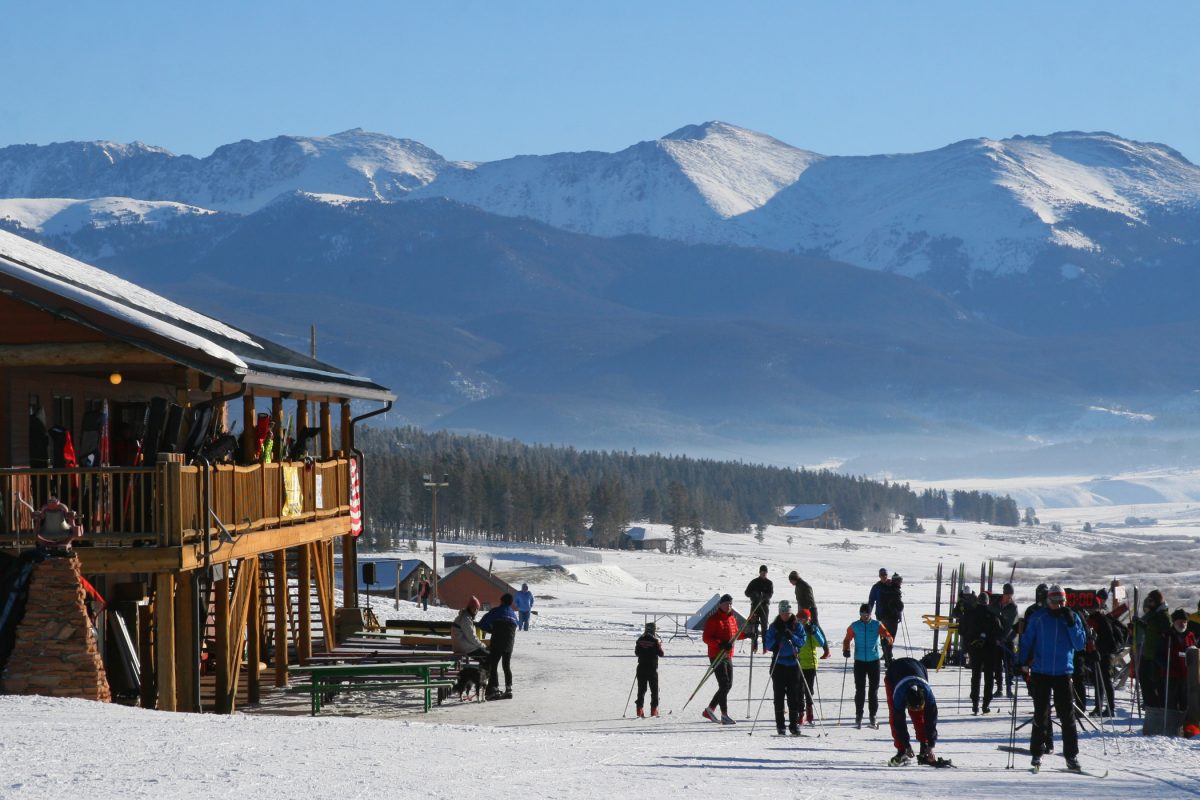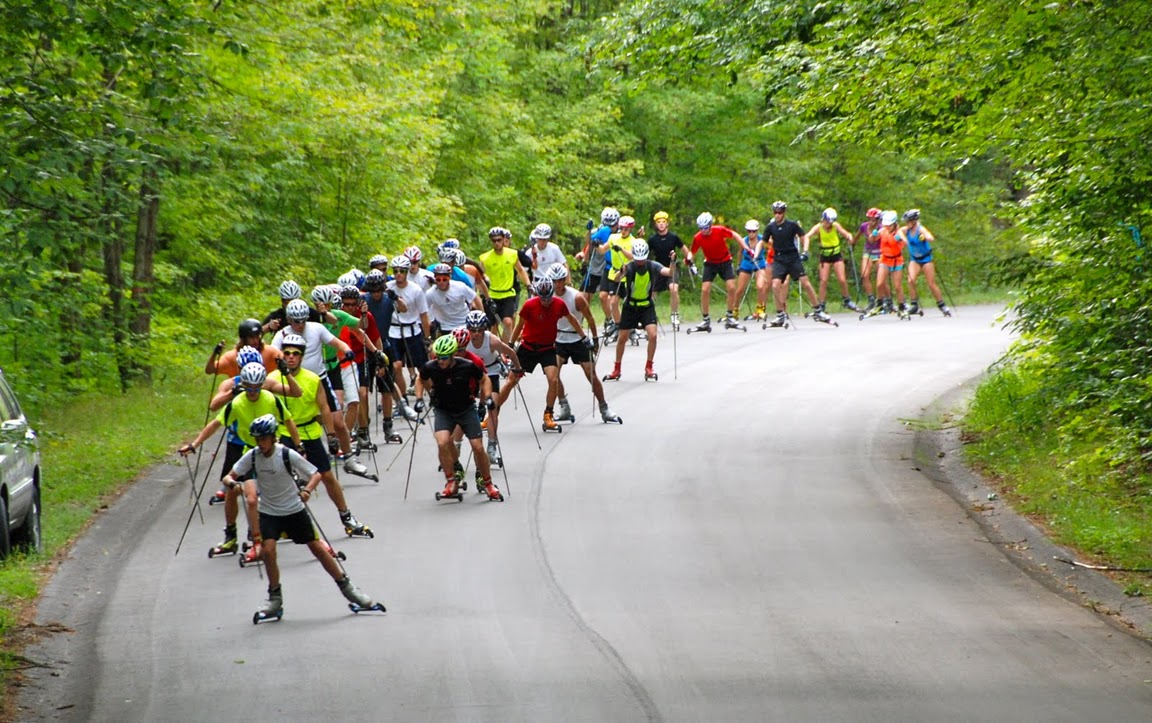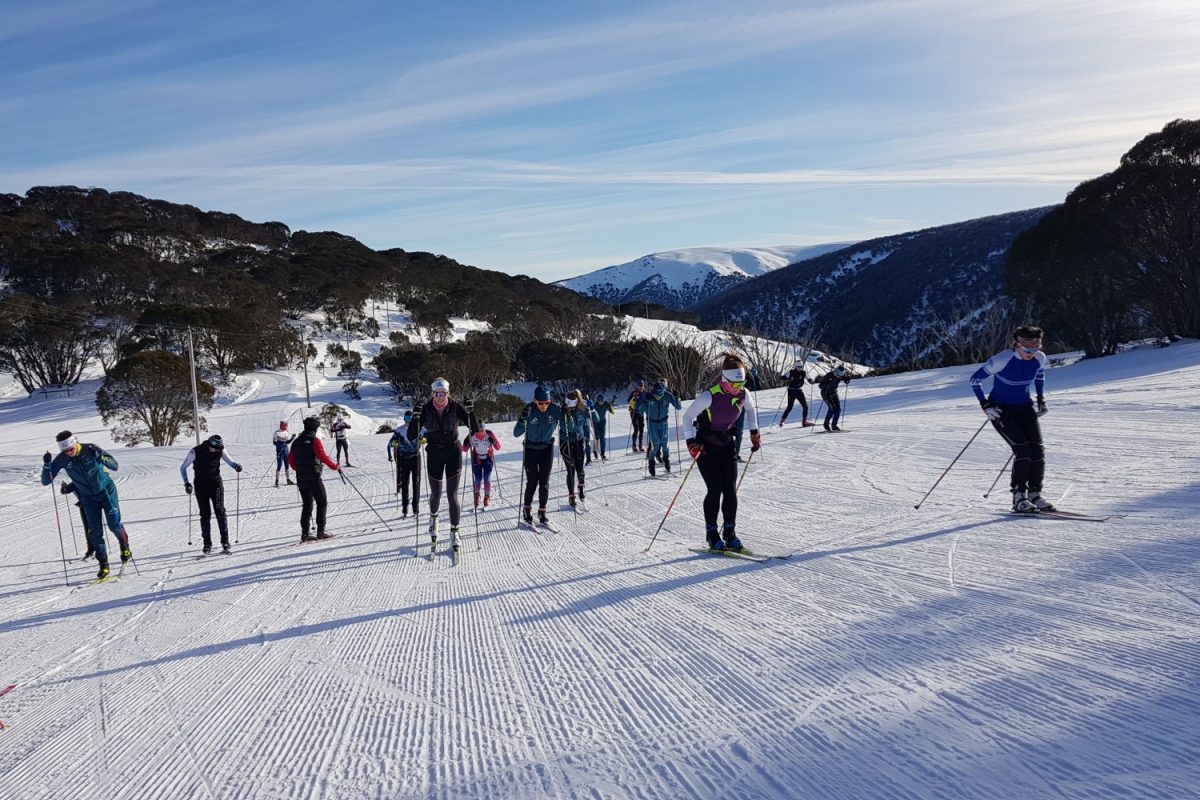This spring John Farra was named USSA Nordic Director, replacing Luke Bodensteiner. Hailing from Saratoga Springs, New York and a member of NYSEF in Lake Placid, John was a member of the 1992 Olympic team. He won a National Title in the 10km classic in 1991 and graduated from the University of Utah in 1996. Most recently he served as the Vice President and Programs Director at the Maine Winter Sports Center.
Last month he took time out of his busy schedule to talk with FasterSkier.
FasterSkier: First of all, congratulations on taking over as USSA Nordic Director! How have the first months on the job gone?
John Farra: It all happened very quickly. I needed to wrap up six years of work with MWSC and get started in Utah within two weeks of accepting the job. I was in Park City away from my girls for 7 out of 9 weeks of the spring. I survived our USSA Athletic Summit, the one-year planning process, my first USSA Congress, a trip to the FIS Congress in Cape Town, selling one home, buying another, moving and driving 2,800 miles across the country with my girls and just completed the five-year strategic planning process for all three sports. It has been a bit crazy, but I don’t think I have screwed anything up too much yet, so I have that going for me!
FS: Was this type of position (National administration) something you have aspired to or was this more a case of seizing an opportunity?
JF: I like to think of it as a natural evolution. I have been a racer, a coach, and over the years I have been taking on more administrative responsibility in my jobs in New York and up in Maine. This type of work seems to be a good fit for me. It is not every skier turned coach turned administrator who can also sit still at a computer for 12 hours straight in an office. It is not always a glamorous job, but I am inspired by these athletes and I enjoy working for them.
FS: Was it a difficult decision to take the position — moving across the country among other things?
JF: Northern Maine was a really special to me and my family and we had decided that it was going to be our home for the long haul. We had just renovated a 100 year-old home and turned it into our dream home in every possible way. We had not been living in it even for a full year when we had to make the decision. But in the end, it is just a house, and my wife and kids were excited about the adventure of moving to Utah, so we went for it. My wife Tess and I both received degrees at the University of Utah, so it is familiar territory for both of us. My two girls, Lina and Hanna (seven and almost five) are at an ideal age for this type of change, and so far so good.
FS: As Nordic Director, what exactly are your responsibilities? What role do you play with the USST?
JF: My responsibilities include anything nordic for the USSA including working with the USSA Sport Committees in cross country and jumping/nordic combined which help govern our sport, setting competition calendars, overseeing SuperTours and our National Championship events, etc. On the U.S. Ski Team side, I guess the best way to describe it is that I work for the 35 athletes, 10 coaches, and six service staff from our three nordic sports to ensure that have what they need to be the best in the world. While they don’t always get everything they want or need, they do a remarkable job trying to achieve that simple goal.
FS: What are your personal goals for you first year in your new job? What are the goals of USSA Nordic?
JF: Honestly, I mostly want to make a smooth transition from Luke (Bodensteiner) to myself, and I don't want to miss any major details. This is turning out to be no easy goal. I am learning that there are enormous amounts of details in any one of these three sports, and Luke just knew how to do them all since he had been here for 12 years. I am desperate to pick up all the tricks as quickly as possible. More than that, I want what every nordic fan wants, to see our sports grow, and to see our results improve on the international stage.
FS: Last season there was a mixture of exciting and disappointing results for the US internationally. Kikkan’s World Cup victory, Andy on the podium, Kris Freeman 5th, some strong performances at U23s/World Juniors among the highlights. On the flip side, the Canmore World Cups did not meet expectations from a results perspective, and the US continues to struggle to be competitive in distance races. Overall, do you feel the US is headed in the right direction, that we are on a path the can lead to consistent improvement and the ability to compete for top results?
JF: In sports there will always be ups and downs. I am not expecting anything less, but honestly, I do think we are headed in the right direction. We have an amazing international program on a small percentage of the budget that other countries are spending. We have awesome coaches, incredibly professional athletes, and solid club programs scattered around this country that are bringing athletes up to a higher level before the support of the National Team. This is a winning combination!
FS: Over the years, USSA has come under criticism from members of the cross-country community for being an Alpine-centric organization. How would you respond to people who feel that cross-country is marginalized by USSA?
JF: I think we need to get over that already, really. Alpine has something like 20 times as many members, 20 times as many sanctioned races, high demand for coaches clinics and education materials that creates a significant revenue stream, several times more major donors, and alpine (and now snowboarding) drives nearly every sponsorship we get. Of course we are marginalized, the majority of our current culture wants to see halfpipes and tricks and they still can't quite get the value of our sport. Think for a moment about ski jumping; now here is one of the first X Games type sports, but now it can't garner much attention thanks to the evolution of the newer X Games sports. We have marginal USSA membership numbers compared to alpine and yet there were 9,000 people who skied all or part of the Birkie! There is support for what we do out there and there is a large participation base. Let's stop worrying about what Alpine thinks of us, or whether we get our share of attention. The simple fact is we are still here! We are still here because we have an awesome tradition in cross country skiing (and in ski jumping), and we need to be proud of our sport, and stop worrying about our standing in the USSA hierarchy. Most importantly, we need to do what we all can do to sing the praises of our sport! We are not likely to ever command a huge amount of attention, but if we can keep growing our sport and if we can keep seeing solid international results from our top performers we will make more people take notice.
FS: Recognizing that Alpine skiing is a significantly more popular sport in this country, what can USSA do to change the perception that all the organization cares about is Alpine? This perception seems to run extremely deep — from fans who would like to donate money but feel it will just be funneled to the Alpine programs, to top athletes who are tired of seeing the constant marketing of Alpine athletes with rarely a mention of cross-country skiers. I remember receiving an email from USSA within the last several years asking that I participate in a survey — I finished the 10 minute questionnaire with the negative feelings for USSA strongly reinforced — questions asking about my favorite US athletes only listed Alpine skiers and all questions were clearly focused on Alpine skiing. This is obviously one small thing, but it highlights the perceived. For many in the cross-country community, anything branded with USSA is automatically suspect. This may not be fair, but it seems to be a reality — how can this be changed so cross-country athletes, coaches and supporters can feel like USSA is just as much “our†organization as it is Alpine skiing’s?
JF: Again, it is very important for everyone to understand that USSA nordic benefits from being a part of the USSA family. It is a strong partnership with solid support from the overall organization, even if it doesn't seem so from a marketing perspective. The USSA is and has been committed to nordic success increasingly so over the past few years even if it seems the attention is mostly on alpine, we benefit when they do well. We see more support for our sport when the entire company does well. It is that simple! I am sorry to anyone who has felt snubbed over the years by the perceived Alpine “Centrix” nature of the USSA, but we benefit greatly from the attention our alpine programs receive, so we should be rooting for their success, but always thinking of how we can garner more attention for ourselves. Our new FoXC program has been an excellent model that will be back in play this winter and I strongly recommend you get your new FoXC hat to show your support for our sport and its athletes. http://foxc.ussa.org
FS: Along this line, why should a cross-country athlete or coach who is not going to US Nationals or Junior Nationals be a member of USSA?
JF:The USSA doesn't drive participant membership just for the sake of membership. While membership numbers can be a measure of the strength of the sport within the company, as you point out, many cross country competitors will not need the type of services we provide. For those who are not looking to track their national or regional rankings, and competing in and being seeded in National or International competitions, or racing for prize money at SuperTour races, or competing in local events who clubs need our insurance coverage, they may not need a USSA membership and we acknowledge that. On the other hand, there are people out there who keep a membership up-to-date simply to show support for the nordic programs even when they do not need the membership benefits we offer. Others are not choosing membership, but prefer to show their support by sending in donations to the USSA or to the FoXC program specifically. Many others have no connection with us but are making a difference in the sport in their communities and this is fabulous. Over time, I would hope that we could increase the numbers of members who find value in what a USSA membership offers, and see an increase in the number of supporters of the programs, teams and athletes we have.
We would, on the other hand, like to see all of the coaches out there become USSA members. It is important that anyone involved in the sport at the local level have a positive experience, and this means first and foremost having a well qualified coach. For starters, we have begun requiring background screenings of all of our member coaches to ensure the safety of our youth participants. We have increased our coaches education offerings, we will be offering more online content through our new Center of Excellence, and launching a new certification process so that when a parent signs a kid up, they know their child is going to be a part of an effective program. As an extra note of interest, the USOC has indicated their interest in helping to see to it that this certification be adopted by the national high school coaches association. In that way, if you want to work in certain coaching jobs in the future, you will have to be professionally accredited. This is a good step towards improving our sport across the board.
FS: It is important to recognize some of the positives from the past years — the bi-annual coaches conference, outreach and education efforts by US ski team coaches, educational resources on the USSA website — these are all significant additions. Can we expect these successful programs to continue? Is there anything new in the pipeline that we can look forward to?
JF: The coaching staff is committed to these outreach and development efforts, so they will absolutely continue. The staff also created an excellent technique CD in 2007 that highlights what we are teaching in terms technical efficiency. Up next, as I mentioned, is the launch of our Level 100 coaches' education certification program this fall. It is our hope that we can get every coach in the pipeline to complete this certification process as a step towards a consistent and effective National Development System. While Level 100 will be an introductory level course, it will cover every step of our Elite Development Pipeline, thereby detailing critical fundamental coaching points for every age group. The following summer we will launch Level 200, followed shortly by Level 300. Every level will be based on the framework of our Elite Development Pipeline. I want to commend the coaching staff, especially Matt Whitcomb, for driving this process. This is a huge project that is above and beyond their coaching duties. However, because this system is created by our U.S. Ski Team coaches, we feel the dissemination of education materials will be most effective.
FS: On a somewhat lighter note, what are you going to miss most about leaving Aroostook County Maine and the Maine Winter Sports Center? What are you going to miss least?
JF: The most…the people. Skiers and coaches who have traveled up there for races will attest to the quality of the people and their instinct to embrace the sport and its players. The people and, well, a nice hot Tim Horton's Café Mocha and sour cream glazed donut of course. The least, the only legitimate complaint I can make is that there was no Mexican food in Northern Maine. Now, of course, I have plenty of options for that in Utah.
FS:Thanks so much John! Good luck with your first season.



